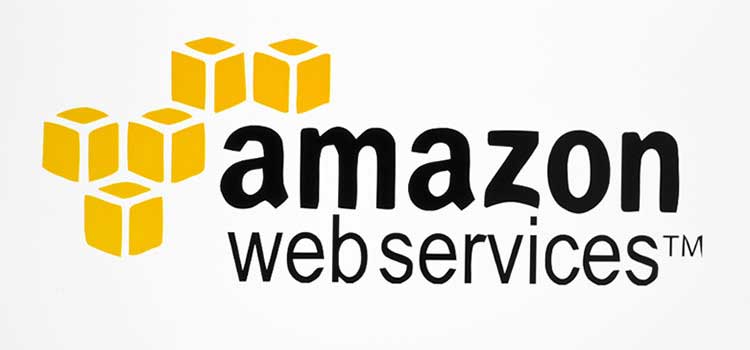You may have heard the word "AWS" passed around fairly often, and you may have asked yourself, "What is AWS?". We will outline everything here, including an introduction to AWS, a history of AWS, a description of AWS services, and an overview of the benefits of AWS.
Overview Of AWS
Across all sectors, cloud computing has become an important part of organizations. The most common type is AWS. This boosts competitiveness and offers relief for any number of business practices. Companies were entirely reliant on purchased servers back in the 2000s, and those servers had minimal functionality and high prices. Plus, countless validations were mandatory for a working server. The more growth companies experienced, the more they wanted servers and optimization methods. It proved inefficient, and often prohibitively costly, to procure those products.
A lot of those issues have been resolved by the benefits of AWS. Companies using AWS have instantly accessible servers, and AWS offers different workloads, enhanced storage options, and enhanced security measures.
What Is AWS?
You must first understand that it's a cloud provider in order to be able to answer "What is AWS?" Cloud services have more flexibility for storage and improved security controls, among other features. They also provide features such as improved security, higher processing power, and database construction that you might find at a local data center. You can get other functions, such as content caching, based on your location.
One of the benefits of AWS is that on a pay-as-you-go basis, you get all 160 cloud services. It ensures that you only pay for the services that you use. And on a relative scale, it's working. That implies that the less you use it, the less you pay for it. And the more you use it, the lower per-unit you pay.
This isn't it. The applications associated with it are related to other advantages of AWS.
· As they run on a stable and efficient infrastructure, the apps are efficient.
· Their on-demand infrastructure facilitates improved scalability.
· The design options available in the cloud allow for a great deal of versatility.
History of AWS
In 2002, AWS was released. The corporation decided to sell its unused infrastructure as an operation, or as a consumer product.
The definition has been greeted with excitement. In 2006, Amazon released its first AWS offer. Amazon held a major event focused on gathering consumer feedback about AWS four years later, in 2012. Similar activities are also organized by the organization, such as Reinvent, which enables clients to exchange input about AWS.
In 2015, Amazon shared that AWS sales reached $7.8 billion. They introduced initiatives from 2015 to 2016, assisting clients in transitioning their services to AWS. These efforts, combined with growing public recognition of AWS features, spurred economic development. By 2016, Amazon's sales soared to $12.2 billion. Today, AWS offers 160 products and services. Considering Amazon's continuous enhancements, this number is likely to expand, with Amazon AI Services engaging more people on the platform.
Let's now deepen our understanding of what AWS is by looking at Amazon Web Services ( AWS) services.
AWS Services
Amazon Web Services has been an important cloud computing technology since it came into being. Here are some of the important offerings from AWS:
Amazon S3
This tool is used for internet backup, and in the object-storage category, it is the cheapest storage choice. The best part is whenever you need it, you can retrieve stored data from almost anywhere.
AWS Data Transfer Products
As the name suggests, these are items for migration, data collection, and data transfer that help you seamlessly collect data. They also allow you to track data in real-time and analyze it.
Amazon EC2 (Elastic Compute Cloud)
This provides, depending on your needs, a stable and resizable computing power. The service is designed to make cloud computing more available on the web-scale.
Amazon SNS (Simple Notification Services)
This is a notification tool that delivers messages via email or SMS to a large number of subscribers. You may send warnings, alerts to the service and other messages that are meant to draw attention to important information.
Amazon KMS (Key Management System)
This is a protection application that uses the data with 256-bit encryption. It also protects it from cyber threats and hackers.
Amazon Lambda
Depending on particular events, this service runs the code and manages the resources based on it. You don't need server maintenance or provisioning, and how much you pay depends on how long the code takes to be executed. Compared with services that charge hourly rates, it saves a lot of money.
Route 53
This is a cloud-based DNS service that doesn't require you to keep a separate DNS account. It is intended to provide a secure and cost-effective way for organizations to route users to internet applications.
How Is AWS Making Lives Easier?
Let's use the example of a giant in the consumer goods industry, Unilever.
Unilever had an issue: a faster time-to-market and a structured environment were required. The business is spread across 190 countries, and its goods depend on digital marketing. Its current local legacy climate has proven useless, unable to satisfy changing IT demands.
Unilever moved a portion of its company to AWS, and since then, rollouts have been smooth, applications for provisioning have been more efficient, and infrastructure for provisioning has also improved.
In push-button scaling, the company could also do it, and AWS 's stable backups ensure that all the company's data is protected and continuously available. Today, thanks to features such as swift deployment rollouts, stable backups, and the capacity to produce real-time reports, Unilever is rising with AWS.
What Are Some Of AWS Disadvantages?
While Amazon AWS has seemingly infinite positive features, there are some drawbacks. For one thing, you'll be paying a charge for technical support.
Another complicating factor is that there are already glitches and problems in cloud computing, such as data disappearing and servers not syncing properly. And, of course, if you are without access to the internet, you are without access to your records.
Depending on the area, Amazon also restricts resource use. So, you don't have much recourse if you're in an environment that seriously limits a particular resource. Some security restrictions still exist. For instance, you're restricted to 100 security groups under the EC2 VPC.
Conclusion
For organizations around the world, AWS is the number one option for cloud computing services. It has a presence and more than 100,000 active customers in over 190 countries. These impressive figures show the continuing development of the platform, with AWS being embraced by more and more companies. This adoption means that there are great job opportunities for individuals who know how to build AWS architecture and applications.
Please feel free to Contact Us for any Cloud services.











